Planting scheme for barberry and the basics of caring for it
Ornamental shrubs are equally popular with landscape designers and ordinary summer residents who want to turn their site into a charming green corner. Barberry will fill it with bright colors, planting and caring for it are very simple and do not require much time. There are many reasons for breeding this plant. From its berries with a pleasant sourness, you can make delicious homemade preparations - jams, compotes. They are rich in vitamins and minerals, therefore they are widely used for medicinal purposes.
The shrub is strikingly beautiful. The color palette of its leaves includes a wide range of shades: orange, lemon, red, crimson, lilac, dark purple. They can be covered with spots of a contrasting color or have an expressive border on the edges. The forms of the bush are also varied. There are common barberry, Canadian, Amur, Turkmen, Korean, Ottawa, multiflorous, ball-bearing, monetaris. Popular with gardeners varieties Superba, Aurikoma, Atropurpureya, Asperma, Orange Rocket and many others. Among them, there are real giants, reaching a height of 3 m, and dwarf species, from which you can make low (up to 30 cm), but dense borders.
Site requirements
Barberry is a surprisingly unpretentious shrub. He is not afraid of strong gusts of wind and drafts. Cultivation of a crop will be equally successful in the high areas it opens and in quiet lowlands protected by walls or trees. You can place the shrub in light shade. This arrangement is optimal for those varieties, the leaves of which are colored yellow. Under the scorching sun, they easily get burns, often dry out and fly around. But most varieties of barberry, especially the red-leaved ones, love bright light. Its lack will lead to the fact that the bush will lose its decorative effect.
The common barberry develops best in fertile neutral soils. In acidic soil, growing it will be ineffective. Such soil must be lime before placing the shrub in it. You can carry out the procedure in advance or pour preparations that reduce the acidity of the soil directly into the prepared pit.
It is recommended to plant barberry in a substrate of the following components:
- humus (it is permissible to replace it with compost);
- garden land;
- superphosphate (100 g);
- wood ash (200 g);
- slaked lime (400 g).
Advice
If the soil at the site is neutral, alkaline or slightly acidic, then you should not add lime and ash to the nutrient mixture.
Shrub roots are sensitive to moisture stagnation. It is categorically unsuitable for swampy places with a tendency to flooding, as well as areas where water stagnates for a long time after the snow melts. If the groundwater is high, the cultivation of barberry, be it ordinary, Canadian or Ottawa, is likely to end in the death of the bushes. There is only one option here - to arrange high fill ridges for the plant.
Landing time and scheme
The optimal time for placing barberry in open ground depends on the condition of the seedling. If it was purchased in a pot or other container, this can be done in the summer.
It is important to consider only 2 points:
- choose a non-hot day for the procedure;
- cover the young bush from the scorching sun rays in the first week after planting.
It is better to place seedlings dug out of the ground on the site in early spring, while the buds of the plant are still sleeping. If you carry out the procedure later, the shrub will take root worse and will hurt.It is allowed to plant young barberries in autumn - in September, first tearing off their foliage. Cultivation of culture is possible in the harsh climate of Siberia. Not all varieties are capable of withstanding it, but only the most frost-resistant ones - common barberry, oblong, Amur. They are placed in open ground there in June.
Pits for planting are prepared in advance - 2-3 weeks before the procedure, so that the soil has time to settle. The shrub grows quickly, so the holes need to be made away from each other - at a distance of at least 1.5-2 m. Their optimal depth and width is 40 cm. This rule is violated if they plan to create a hedge out of barberry. Then it is better to plant it in a trench of the same depth, placing neighboring plants at intervals of 0.5 m. If the hedge is in several rows, then the bushes are staggered.
The bottom of the pit is covered with a layer of sand, then it is filled with a nutrient substrate and abundantly moistened. Placing a barberry bush in the hole, carefully spread its roots, cover them with soil, and compact. The seedling is well watered. Professionals advise to cover the ground near its trunk with compost or peat. They will help retain moisture in the soil and provide the young plant with nutrients. In order for the planted barberry to take root faster, it is cut off, leaving from 3 to 5 developed buds on it.
Sowing seeds and cuttings
Shrub propagation can be carried out in different ways:
- seeds;
- cuttings;
- layering;
- dividing the mother bush.
The seeds are obtained from ripe barberry berries. Having separated the seeds, they are put in a potassium permanganate solution for a couple of minutes, dried and sown immediately on the garden bed. It is more convenient to carry out the procedure in the fall. The optimum depth of planting seeds is 1 cm. In spring they will sprout. When the sprouts release 2 full leaves, the seedlings are thinned out. Leave at least 3 cm of free space between the plants. They can be transplanted to a permanent site in 2 years.
Advice
Spring sowing of barberry seeds is also possible, but in this case they will have to be stratified. They are mixed with sand and placed in a refrigerator, where they are stored for 2-5 months, keeping the temperature in the range of 2-5 ° C.
Generative reproduction of a shrub is a laborious and lengthy process. In addition, it does not guarantee the preservation of varietal qualities. Having planted an Ottawa barberry with seeds, you cannot be completely sure that it is he who will grow.
More often the culture is bred by cuttings. To get them, you only need a barberry bush and a sharp knife. Their cutting is carried out in the second half of June, preferably in the early morning. Having previously cut off the lower leaves, the cuttings are kept for 1-2 hours in a solution of a drug that stimulates root growth. After its remnants are washed off with water and the chopped barberry is placed in a nutrient substrate from the following components:
- humus;
- fertile land;
- peat;
- sand.
For the cuttings to take root, the soil must be moist and the air warm. Therefore, for 2 weeks, greenhouse conditions must be created for them, from time to time removing the shelter for ventilation. When the seedlings get stronger, they are moved to the beds, where they will continue to develop. After 2 years, the cultivation of barberry from cuttings can be considered complete: a young bush is planted in a specific place for it.
Getting layering and dividing the bush
The fastest and easiest way is to propagate the culture by layering. To get them, in the spring, a shallow (about 20 cm) groove is made in the soil under the bush. One of the strongest lower annual shoots is tilted and placed in it. Having securely fastened the branch, the groove is covered to the top with soil. If done correctly, only the top of the shoot will be visible. Over the summer, it will take root, and a new bush can be planted in a permanent place.
Spring reproduction of barberry by dividing the mother plant is also popular. Most often it is used for low crop varieties.A 3-5-year-old bush is suitable for dividing, the root collar of which is deepened into the soil by at least 10 cm. It is removed from the soil and cut into pieces of approximately the same size.
The roots of the barberry are quite firm. One pruner is not enough to separate them. In this case, a garden saw will come to the rescue. The procedure must be performed very carefully, the bush is severely injured during it, and unnecessary damage will only worsen its survival rate. Places of cuts are sprinkled with crushed coal and the resulting cuttings are immediately planted. Such reproduction cannot be performed if the bush has already formed shoots branching above the soil level.
Features of agricultural technology
Korean or Ottawa, Superba or Atropurpurea, Harlequin or Oxyfilla - all types and varieties of barberry need the same care. It includes only 5 procedures:
- watering;
- top dressing;
- loosening;
- weed removal;
- pruning.
Shrubs are watered in the open field only on dry days. Cold well water is not suitable for humidification. It is better to use liquid from containers standing in the sun, heated by its rays. One watering per week is enough for barberry bushes. It is impossible for moisture to get on the leaves, the stream of water is directed strictly to the root. These rules apply to both adult barberries and freshly planted ones.
The plant loves weed-free soil, so the area around it is regularly weeded and loosened. It is recommended to remove root growth along with excess grass. In order not to waste time on these procedures, it is enough to mulch the ground under the bush with sawdust, peat or compost.
Barberry responds well to feeding. They begin to be introduced from the second year of the plant's life in a permanent place. In the spring, the bush especially needs nitrogen. You can fertilize it urea, dissolving in 1 bucket of water 20-30 g of the drug for each plant. The procedure is repeated at intervals of 3-4 years. Phosphorus and potassium help to improve fruiting in varieties with edible berries. They are brought in twice per season: in the summer at the stage of ovary formation and in the fall, when the harvest has already been harvested.
Pruning and preparing for winter
In order for the shrub to retain its decorative effect, it must be monitored by removing weakened, dry, damaged, diseased and interfering shoots. Many of its varieties can be shaped into any shape using garden shears. For the first time, decorative barberry is cut at the age of 1 year. Do it in the spring. Shoots are shortened strongly - by ½ or even ⅔ in length. They grow very quickly, so there is no need to fear that the procedure will harm the barberry. When the bush reaches 2 years of age, annual sanitary pruning is carried out twice a season - at the beginning and at the end of summer. For dwarf varieties of culture, it is optional.
In late autumn, the soil near the barberry trunks must be mulched with organic material - compost, dry leaves, sawdust. Most plant varieties have good frost resistance, and the spectacular Superba is also distinguished by it. While the shrub is still young (up to 5 years old), it is covered with spruce branches or burlap for the winter. Its evergreen varieties cannot do without protection from the cold. In the Siberian climate, adult plants also need it. For them, a kind of hut is made of brushwood or spruce branches, which is covered with snow from above.
Barberry is an interesting culture for which there is a place on any site. Even in single plantings, the shrub will stand out, attracting attention with the unusual color of the leaves. For some varieties, it even changes from season to season. Barberry hedges are both spectacular and practical.
With a high decorative effect, care for a shrub in the open field requires minimal, you don't have to invest a lot of effort in it. Barberry firmly endures adverse weather conditions: it is not afraid of hurricane winds, does not dry out in hot summer, does not freeze in severe winter. It is undemanding to the quality of the soil, it can grow even on soils with a scarce supply of nutrients.The culture has many advantages, and the impressive variety of barberry varieties opens up a wide field for experimentation. Combining contrasting or similar in color, shape of leaves and crown, plant height, you can create unusual compositions, the beauty of which is worthy of the artist's brush.

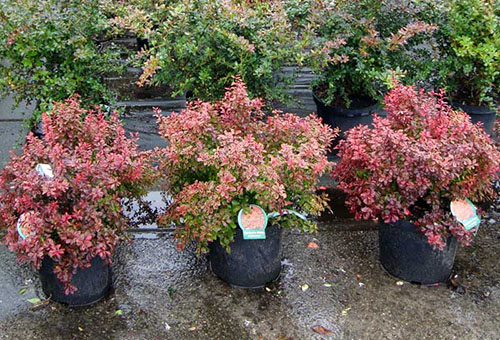
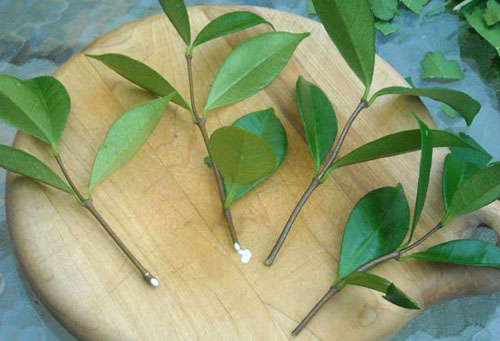
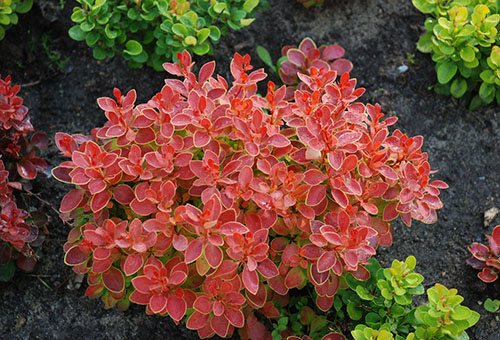
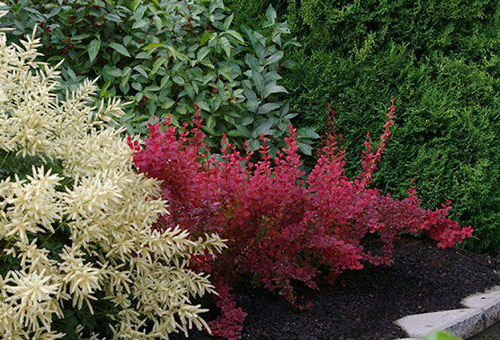
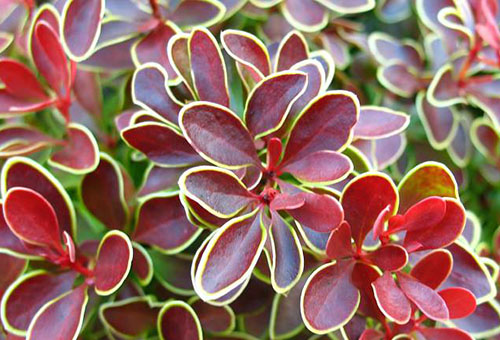

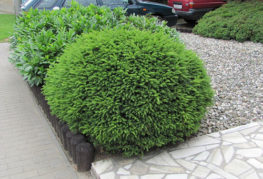

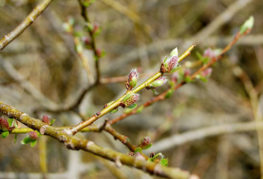
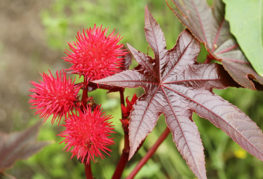
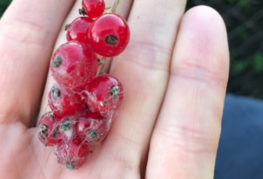

and will be published shortly.